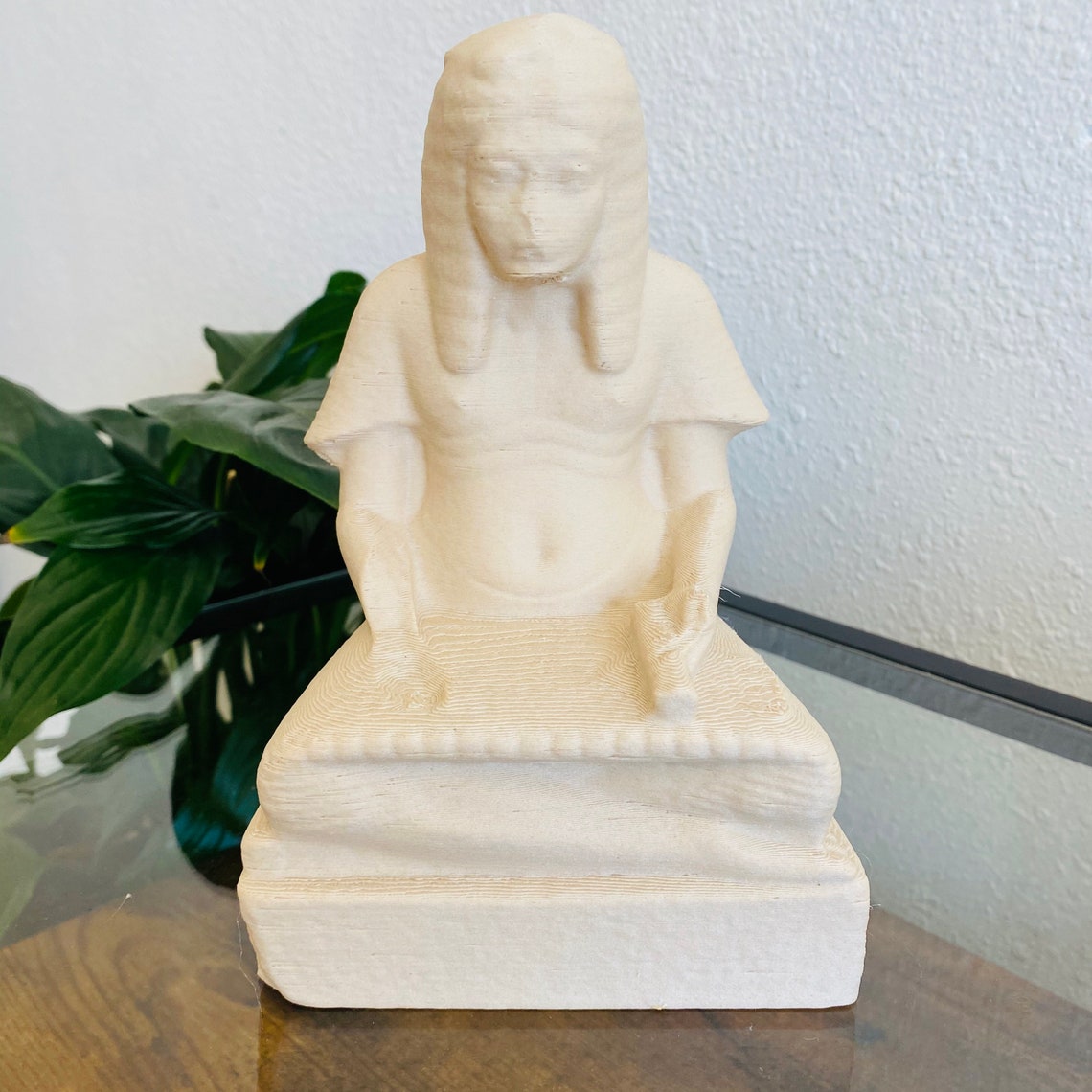

The features of its face show a very prominent chin and cheekbones, as well as very thin lips. Before being polychromed (painted) to give it greater realism, a thin layer of plaster was applied to the sculpture.
Statue of seated scribe series#
Limestone, the main material with which the beautiful sculpture was carved, did not prevent the author from adding another series of inlays such as polished rock crystal, also known as quartz, for the eyes - perfectly framed in thin copper sheets - as well as wood for the nipples. The artist took extreme care and great delicacy in representing even the nails with great detail. With a less athletic anatomy and wide hips revealing its extreme flabbiness and overweight, especially in the chest - a sign of its high social status - the composition is complemented by a semi-circular dark-toned marble base, the seat of the beautiful sculpture that must have adorned some chapel of a temple or sanctuary.Ībove, different views (rear and profile) and a detail of the hands holding the papyrus that is about to be written. However, the right hand was supposed to hold a writing tool (presumably a reed pen), which is now lost. As if it were a triangle, due to its seated position and crossed legs, the piece forms an imaginary pyramid, with particular importance placed on its frontal view and symmetry, which is only broken by the papyrus scroll and the arrangement of the hands. The beautifully crafted small statue represents a scribe about to write a manuscript on a sheet of papyrus, reflecting his profession in the typical working position, seated, with an upright torso and crossed legs.
Statue of seated scribe skin#
The character, with black hair and earthy skin and measuring only 53 cm in height, corresponds to a high-ranking official in the administration and state, undoubtedly one of the most coveted positions in Egyptian society. The over four-thousand-year-old figure was carved in limestone and later painted to give it a lively and fleshy appearance.
Statue of seated scribe how to#
It is very important to point out that scribes were trained from the age of five, and they were among the few people who knew how to read and write in Ancient Egypt.

Its high degree of realism, especially in the face and gaze (thanks to its blue inlaid eyes) and its perfect anatomy in a seated position, make it a fundamental work to understand the art and origin of Egyptian culture. One of the features that can be deduced from the also called "Seated Scribe of the Louvre" is its hieratism, that is, the rigidity, immobility, and lack of expressiveness in the gestures, absence of movement and that exterior appearance, so representative of Egyptian art. The astonishing polychrome (painted) figure is a vivid example of how Egyptian craftsmen and artists painted their sculptures and monuments to bring them to their fullest glory by providing them with greater realism. The iconic sculpture belongs to the Old Kingdom of Egypt (2750-2250 BCE) and is considered, along with the Pyramids of Giza or the Great Sphinx, as a masterpiece and representative work of this period. The famous Seated Scribe of the Louvre Museum in Paris is one of the best-preserved sculptures of ancient Egyptian civilization, and undoubtedly one of the most beautiful known to date. ▷ Art / Esculpture / Egypt style / Seated Scribe of the Louvre


 0 kommentar(er)
0 kommentar(er)
